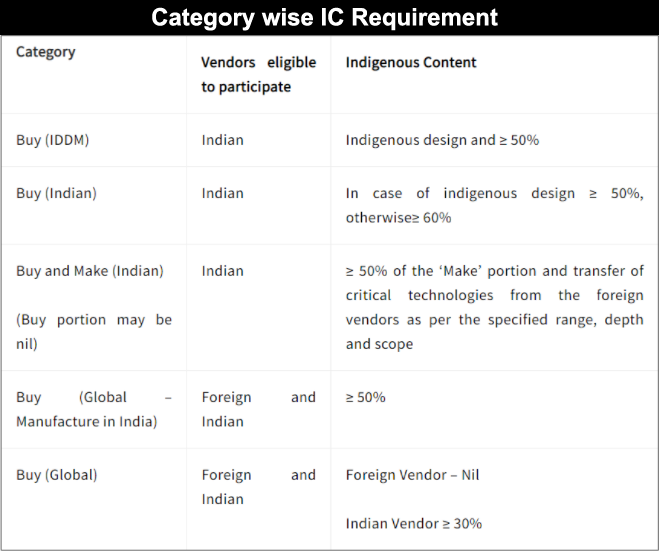Defence Acquisition Procedure | 05 Mar 2022
For Prelims: Defense Acquisition Procedure, Initiatives to Boost Domestic Production.
For Mains: Significance of Defence Acquisition Procedure in Indigenisation of Defence.
Why in News?
The Ministry of Defence approved projects that will involve design and development of the military hardware covering light tanks, airborne stand-off jammers, communication equipment and simulators under Defence Acquisition Procedure (DAP).
- The defense ministry has cleared nine such projects: four under the ‘Make-I’ and five under the ‘Make-2’ categories of the DAP 2020.
- In the Union Budget 2022, India earmarked Rs 84,598 crore - 68% of the military’s capital acquisition budget --- for purchasing locally produced weapons and systems to boost self-reliance in the defence sector, besides setting aside 25% of the defence R&D budget for private industry, startups and academia to encourage them to pursue design and development of military platforms.
What is the ‘Make’ Category?
- The ‘Make’ category of capital acquisition is the cornerstone of the Make in India initiative that seeks to build indigenous capabilities through the involvement of both public and private sector.
- ‘Make-I’ refers to government-funded projects while ‘Make-II’ covers industry-funded programmes.
- Make-I involved in development of big-ticket platforms such as light tank and communication equipment with Indian security protocols.
- Make-II category involves prototype development of military hardware or its upgrade for import substitution for which no government funding is provided.
- The five projects approved under the industry-funded Make-II procedure are simulators for Apache attacks helicopters and Chinook multi-mission choppers, wearable robotic equipment for aircraft maintenance, autonomous combat vehicle and integrated surveillance and targeting system for mechanised forces.
- Another sub-category under ‘Make’ is ‘Make-III’ that covers military hardware that may not be designed and developed indigenously, but can be manufactured in the country for import substitution, and Indian firms may manufacture these in collaboration with foreign partners.
What is DAP 2020?
- It enables the notification of a List of Weapons or Platforms that will be banned for import.
- It focuses on Foreign Direct Investment (FDI) in defence manufacturing and indigenization of the manufacturing prices.
- It also introduces several new ideas such as the need to incorporate artificial intelligence in platforms and systems, use of indigenous software in defence equipment and 'innovation' by Start-ups and MSMEs (Micro, Small and Medium Enterprises) as a new category of defence acquisition.
- It includes following procurement categories: Buy (Indian – Indigenously Designed Developed and Manufactured), Buy (Indian), Buy and Make (Indian), Buy (Global - Manufacture in India) and Buy (Global).
- It increases the Indigenous Content (IC) requirement for all projects from 40% to 50% earlier, depending on the category, to 50% to 60%.
- Only under procurement through Buy (Global), foreign vendors can have 30% IC from Indian companies.
What are the other Initiatives to Boost Domestic Production of Defence Equipment?
- Increased Capital Acquisition Budget (CAB) for Domestic Sector
- Defence Industrial Corridors.
- Corporatization of the Ordnance Factory Boards
- Defence India Startup Challenge
- SRIJAN Portal
- Draft Defence Production and Export Promotion Policy 2020
- Innovations for Defence Excellence (iDEX)
- Mission Raksha Gyan Shakti

